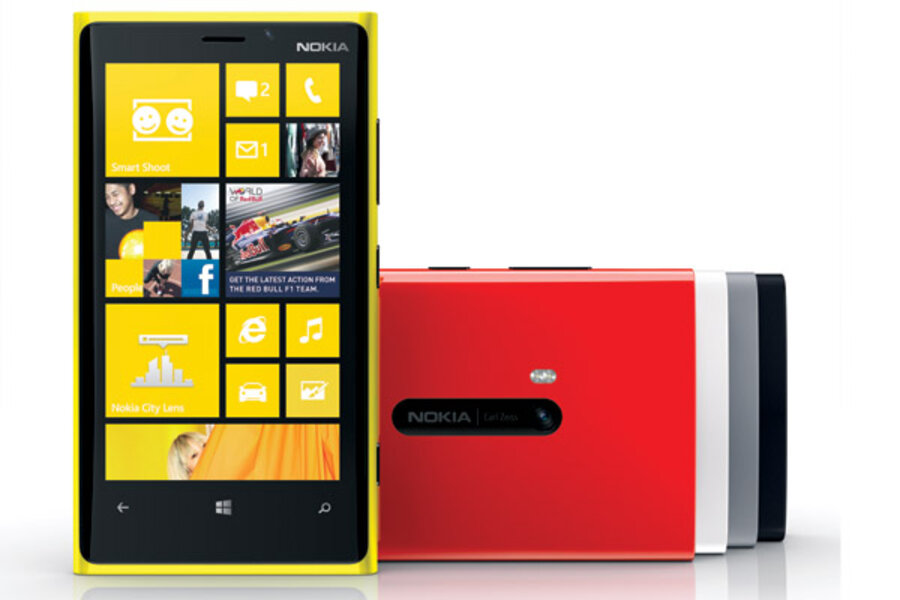Galaxy S III, Lumia 920, Note II: Three phones that rival Apple
Loading...
Late in 2012, the world crowned a new king of smart phones. The Samsung Galaxy S III is now the most popular phone in the world, outselling the Apple iPhone 5, according to research firm Strategy Analytics in Newton, Mass.
While this is the first smart phone to race ahead of Apple's in years, it's far from the first device to rival the iPhone feature for feature.
Here are three excellent, non-Apple smart phones that deserve a spot on any shopper's shortlist.
Samsung Galaxy S III: Samsung built the paragon of Android phones. It's not the fastest device to run Google's operating system. With a price tag of $200 to $250 (with a two-year contract), it's definitely not the cheapest.
But the Galaxy S III is a jack-of-all-trades. Its screen? Large and lovely. Its camera? One of the best of any Android phone. Its data connection? Top-of-the-line 4G LTE, which can download files faster than some home Internet connections.
Android has mostly caught up with Apple in terms of applications. Both app stores offer all of the essential programs or at least very similar alternatives. In many cases, breakthrough hits still debut on iPhone and then pivot to Android a few months later.
But Android has better versions of the ever-so-popular Google apps, such as Maps, Translate, and the remarkable Google Goggles, which can identify paintings, name famous buildings, decipher foreign languages, and even solve Sudoku puzzles – all on sight. (Just snap a photo of the object in question and give Google Goggles a moment to process.)
The Galaxy S III works with all five major American phone companies: Verizon, AT&T, Sprint, T-Mobile, and U.S. Cellular.
Nokia Lumia 920: While Samsung and Apple duke it out, Nokia has designed a killer phone that runs Microsoft's phone operating system. Windows Phone 8 is elegant and streamlined (much like the iPhone) but lets people personalize the look of the phone (much like Android).
The Lumia 920 sports a gorgeous screen, 4G LTE, and an excellent camera that even performs well in low-light situations.
Microsoft made sure that its phones play well with Office and Outlook. Unlike Android or the iPhone, the Lumia 920 has official versions of PowerPoint, Excel, and Word, allowing you to create, edit, and share documents.
Lumias come with a standard charging cable, but the 920 has an optional power station that charges the device wirelessly. The battery will start recharging as soon as the phone is placed on top of the charging plate.
The $99 Lumia 920 is only available through AT&T. Another strong Microsoft phone, the $199 HTC Windows Phone 8X, is sold by Verizon, AT&T, and T-Mobile.
Samsung Galaxy Note II: Apple and Samsung have very different philosophies. Apple strives for the platonic ideal – one phone that (in theo-ry) fits everyone. Samsung, on the other hand, gives shoppers options. It releases tons of devices each year. Expensive phones and modest ones. Some with a keyboard and others with full touch screens. Petite and, in the case of the Note II, enormous!
The Note II teeters on the edge of tablethood. Its 5.5-inch screen offers 60 percent more screen space than the iPhone 5's 4-inch screen. This extra real estate gives websites, photos, and video plenty of room to stretch out. There's no need to squint at tiny text with this phone.
Of course, big screens require big pockets or, better yet, a purse. Good luck trying to squeeze this thing into a pair of tight-fitting jeans.
The Note's king-sized screen also eases the learning curve of trying to type without a physical keyboard. All three of the phones highlighted in this article use virtual keys – lettered buttons that appear on the screen. Using these quickly and accurately takes a little practice. But in the case of the Note II, a bigger screen means larger keys.
Samsung also packs in a stylus, a feature missing from most smart phones. This "S Pen" lets you scribble down notes or tap keys with a bit more precision than with fingers. The stylus tucks into the phone, and there's an optional alert that will sound if you start to walk away without the S Pen stowed in place.
The Note II, which costs about $300, is sold under all five big US carriers.







